Method 1 – Applying the FILTERXML and SUBSTITUTE Functions in Excel
We have a dataset where there is a list of Countries and their respective cities consolidated like the screenshot below. We want to remove the consolidation.

Steps:
- Select the cell where you want to keep the split data from the existing consolidated data. In this case, it is cell C8, which is the first cell of the new column USA.
- Insert the following formula into cell C8 or your selected cell.
=FILTERXML("<t><s>"&SUBSTITUTE(C5,",","</s><s>")&"</s></t>","//s")Cell C5 is the cell for Cities of the country, USA. We used the FILTERXML function which has two arguments xml and xpath, respectively. We used the SUBSTITUTE function which has arguments text,old_text, new_text, and instance_num, respectively.
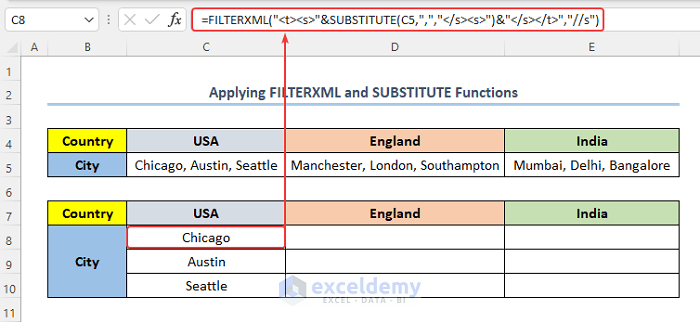
- Drag the Fill Handle to the rest of the cells of the respective row.
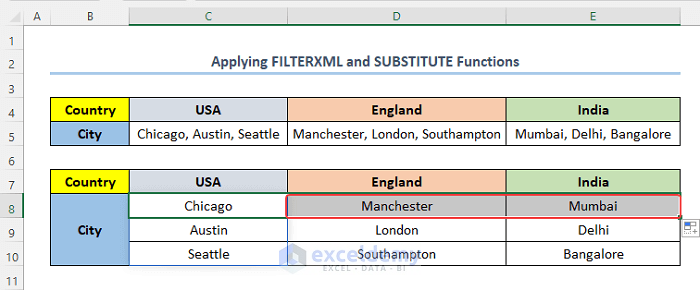
Note: The FILTERXML function is only available in Microsoft 365 for now.
Method 2 – Using the Text to Column Wizard to Remove Consolidation into Multiple Columns
We have a dataset of Countries with their respective Cities consolidated with the Delimiter comma. We want to remove the consolidation and keep the data in multiple columns.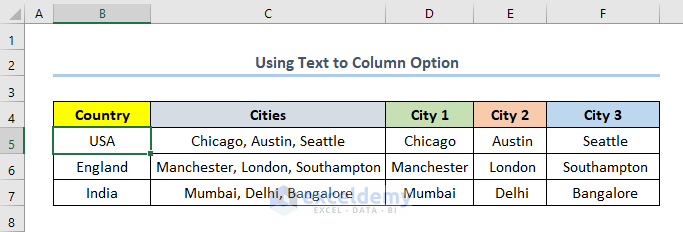
Steps:
- Select the range you want to remove consolidation from. In this case, it is range C5:C7.
- Go to the Data tab.
- Select Text to Column from Data Tools.
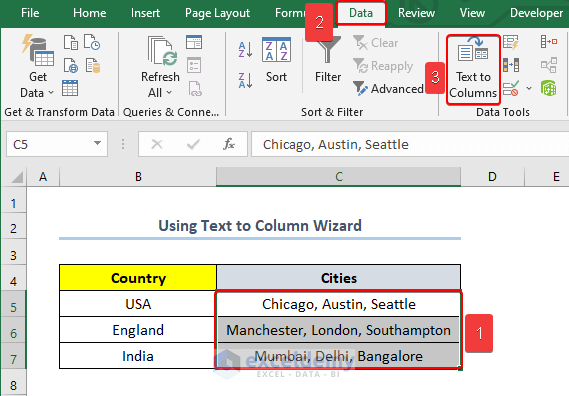
- A box will appear as shown in the below screenshot.
- Select Delimited and hit Next.
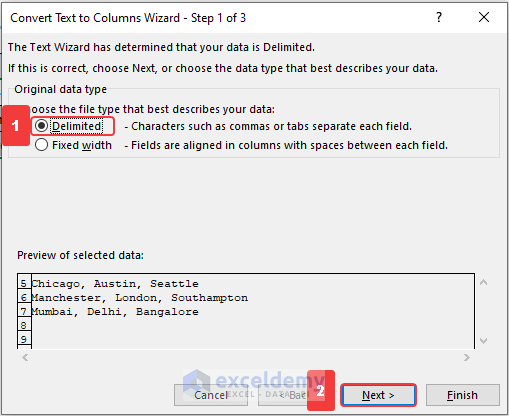
- Select Comma from the Delimiters options.
- Press Next.
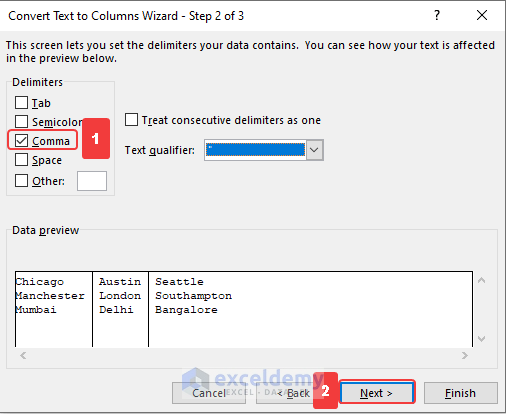
- In Destination, insert your desired destination. In this case, it is $D$5.
- Click on Finish.
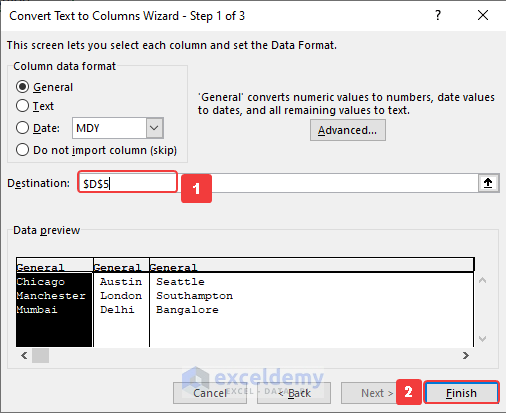
- You will get your desired output like the screenshot below.

How to Remove Consolidation References Using VBA Code
We have a worksheet where we have performed consolidation using the Consolidate tool.
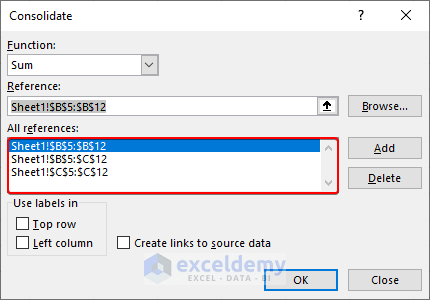
Steps:
- Press Alt + F11 to open the VBA window.
- Select Sheet 5 or the sheet you are working on, and right-click on it.
- Select Insert and choose Module.
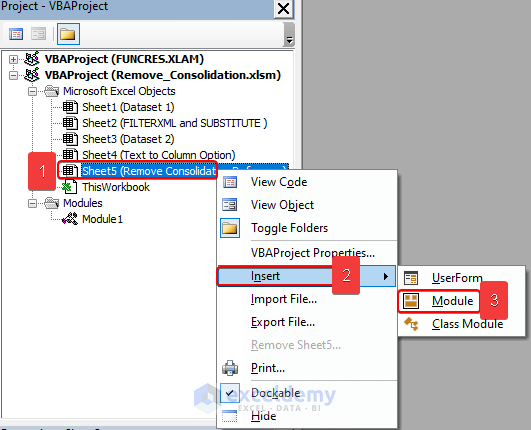
- Copy the following code and paste it into the blank box.
'This Code will Remove Consolidation References
Sub RemoveConsolidationRef()
Dim ACS As Worksheet
Dim J As Long
Dim P As String
Dim ces As Variant
Set ACS = ActiveSheet
With ACS
If Not IsEmpty(.ConsolidationSources) Then
ces = .ConsolidationSources
For J = 1 To UBound(ces)
P = P & "#" & J & ":" & ces(J) & vbCr
Next J
Select Case MsgBox("Consolidation Reference found" _
& vbCr & vbCr & P & vbCr & "Do You Want to Delete?", _
vbYesNo Or vbQuestion, "Worksheet " & .Name)
Case vbYes
On Error Resume Next
.Cells.Consolidate Sources:=Array(vbNullString), _
Function:=xlProduct, TopRow:=False, LeftColumn:=False, CreateLinks:=False
End Select
Else
MsgBox "Nothing Found", vbOKOnly Or vbInformation, "Worksheet " & .Name
End If
End With
End Sub
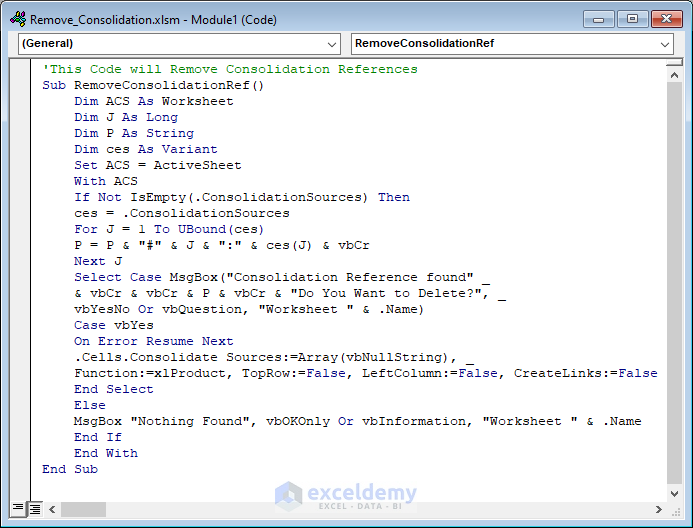
We used an If Not command to determine if the Consolidation Sources were empty or not. If not, we created a MsgBox to determine if we want to remove the consolidation references or not. We deleted all the consolidation sources. And, if the Consolidation Sources are empty, then the code will return ‘No consolidation references found’.
- Run the code.
- Select Yes and all your consolidation references will be deleted.
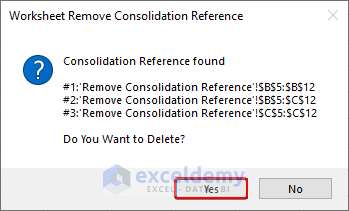
Download the Practice Workbook
<< Go Back To Consolidation in Excel | Merge Sheets in Excel | Merge in Excel | Learn Excel
Get FREE Advanced Excel Exercises with Solutions!

